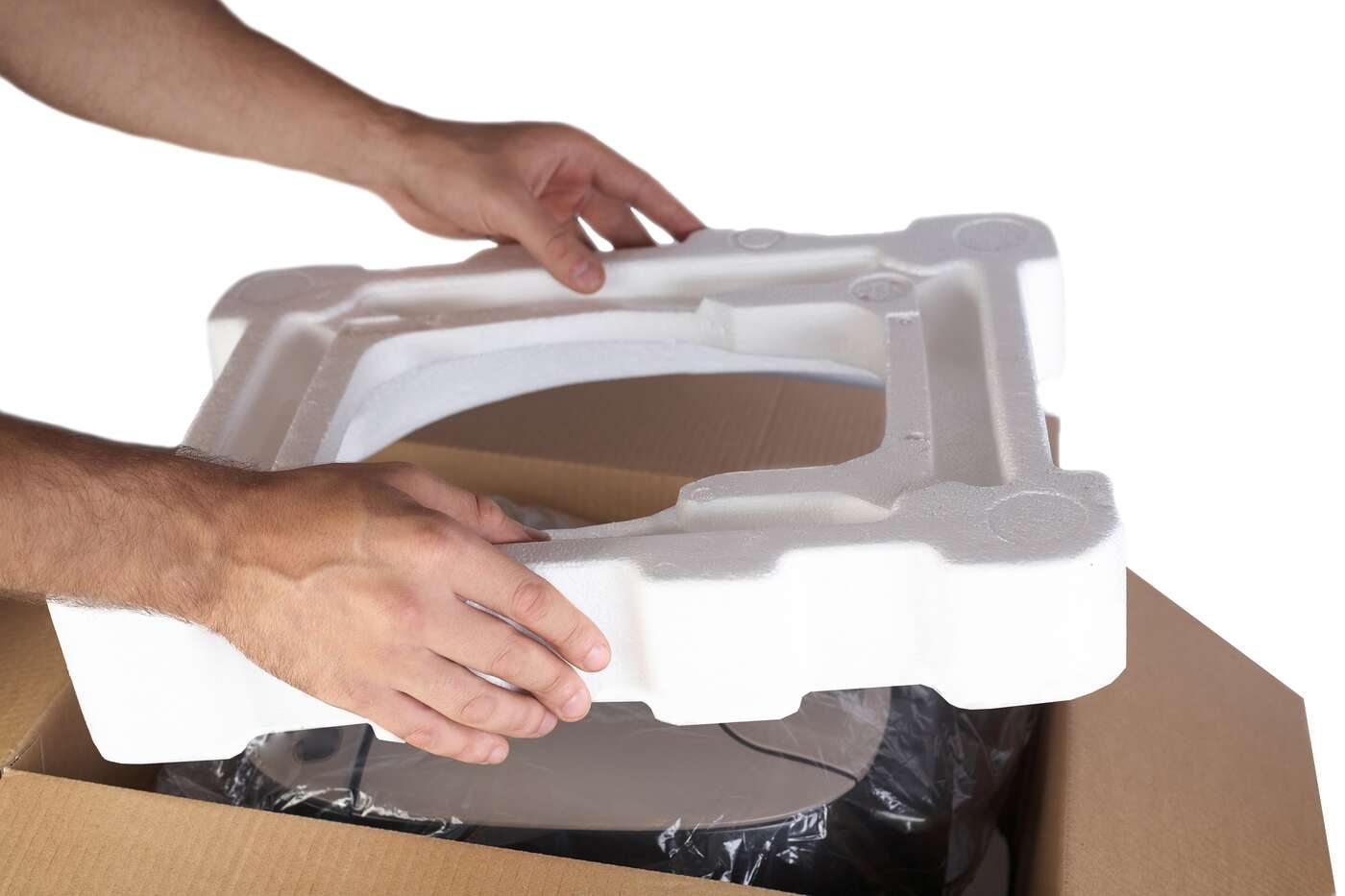At Benchmark Foam, we’ve seen firsthand how the right packaging can make or break a product’s journey from factory to customer. Cardboard and plastic have been standard packaging choices for years. However, molded EPS packaging can offer a better way. EPS is light but strong, saves money and can be recycled.
The Problem with Traditional Packaging
Cardboard
Cardboard is everywhere. Cardboard is cheap, you can print on it easily and it’s commonly recycled. But it has problems:
- Weakness under stress: Even double-walled boxes can crumple under heavy loads or moisture, leaving products vulnerable.
- Limited cushioning: Unless paired with extra fillers (like bubble wrap), cardboard offers minimal shock absorption.
Plastic
Vacuum-formed plastics (like PVC or PET) are common for display packaging, but they come with downsides:
- Environmental concerns: Not all are recyclable or even recycled, with less than 20% making it back into production.
- Brittleness: Thin plastic shells crack under impact and thicker options drive up costs.
EPS molding sidesteps these issues by combining the best of both worlds. It provides protection without the waste.
Why EPS Molding Stands Out
1. Unmatched Protection
EPS packaging is engineered to cradle products. Its closed-cell structure absorbs shocks far better than cardboard or rigid plastic, making it ideal for fragile items like electronics, medical devices and glassware. Case in point: Drop tests show EPS outperforming foam alternatives, keeping contents intact even after repeated impacts.
2. Cost-Effectiveness That Adds Up
- Lower shipping costs: EPS is 98% air, so it’s incredibly light, reducing freight expenses.
- Fewer damaged goods: Better protection means fewer returns and replacements.
- Scalable production: After creating the mold, EPS pieces can be made fast and uniform every time, also saving labor costs.
3. Sustainability Without Compromise
- Recyclable and reusable: Clean EPS can be reformed into new products, from insulation to packaging inserts. Benchmark Foam even offers 100% recycled eps360®, proving the material’s circular potential.
- Less material waste: Unlike cardboard (which often needs excess fillers) EPS molds fit products snugly and minimize unused space.
- Energy-efficient production: EPS molding consumes less energy than plastic alternatives, with a smaller carbon footprint per unit.
4. Design Flexibility
Molded EPS can be shaped to fit nearly any product, from delicate lab equipment to bulky automotive parts. Need a compartment for accessories? A contour to prevent shifting? No problem. Traditional materials require cutting, folding or layering and EPS is molded to exact specs, often in one step.
Making the Switch: How Businesses Benefit
For E-Commerce:
Online retailers lose millions yearly to damaged shipments. EPS packaging slashes these losses by:
- Preventing movement in transit with contoured molds.
- Eliminating the need for extra padding which saves money on materials.
For Medical and Electronics:
- Sensitive gear demands zero room for error. EPS offers:
- Static-safe options for electronics.
- Temperature stability for medical supplies (EPS insulates against heat and cold).
For Food and Beverage:
EPS’s thermal properties keep perishables fresh longer than cardboard, reducing spoilage. It’s also non-toxic and FDA-compliant for direct food contact.
The Bottom Line
Traditional packaging has its place, but EPS molding delivers better protection, lower costs and greener solutions without trade-offs. At Benchmark Foam, we’ve helped businesses across industries transition to EPS with molds designed for their exact needs, cutting waste, boosting efficiency and keeping products safer.
Ready to rethink your packaging? Let’s talk.

